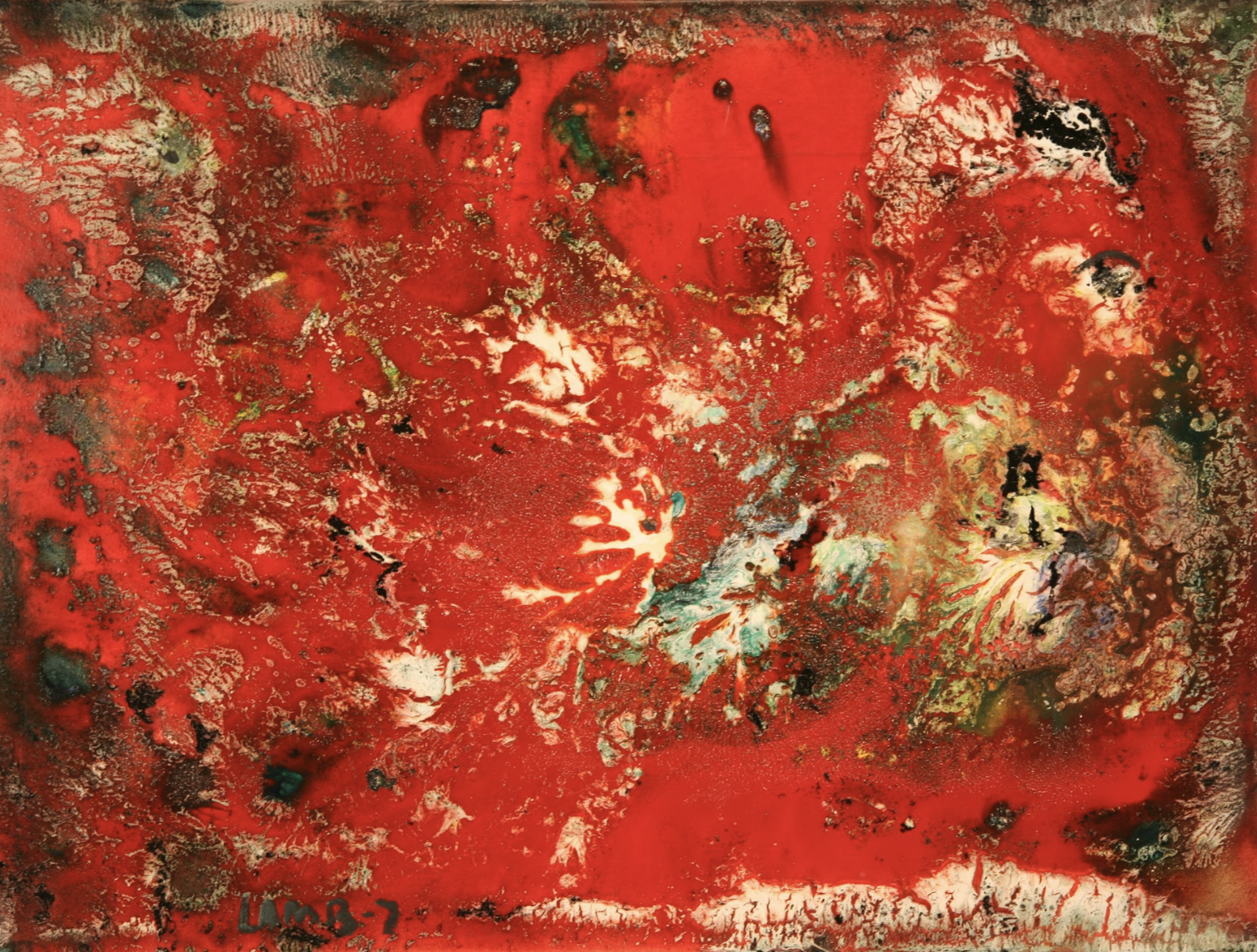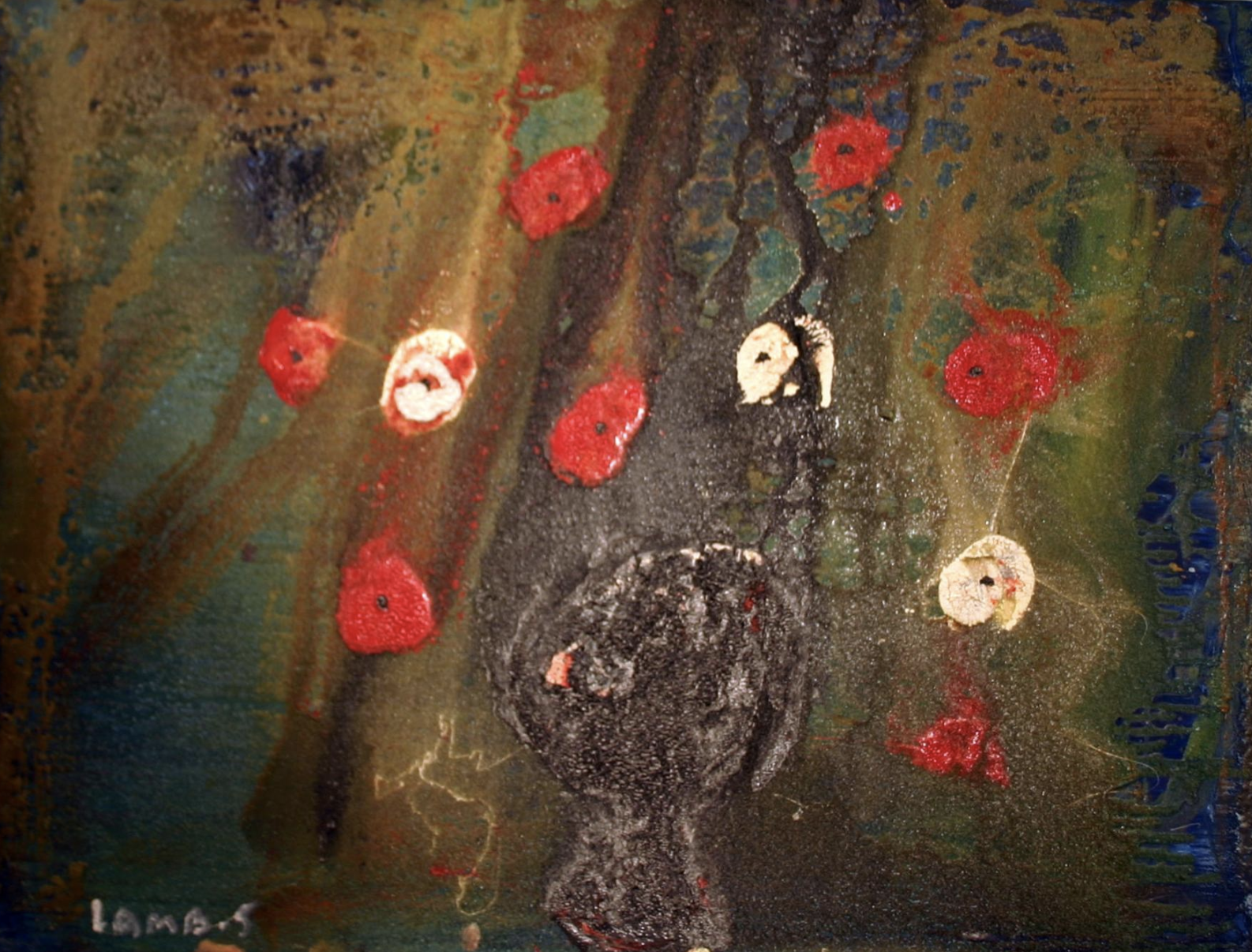Beyond the Canvas
Beyond the Canvas
Rose Gabler
I was recently asked by a colleague of mine about my grandfather, Matt Lamb's, artwork. After seeing some of the materials he used when making his pieces, they were curious as to how the canvas held up and what happened when it was put in certain conditions or if it ripped or if it was damaged. How would this be seen or taken care of? Was the painting destroyed? Was it re-used? Was it kept in a personal collection to be used as inspiration for other pieces? I quickly delved into that thought a bit and realized, if it became damaged it was meant to be so. Below is what I shared with them and I believe it is a good reminder for all of us to know that we may face many challenges and obstacles, but maybe we shouldn't put pressure on ourselves and worry about breaking under those pressures but focus on learning how to be flexible and know we can grow regardless. Take this as you will -
As a granddaughter of an artist, growing up surrounded by international and cultural influences provided many opportunities to develop psychological understandings of not only the artists themselves, but of the audiences reveling in their new emotional experiences. Art, after all, is a universal language as my grandfather often told me and this was made very apparent to me throughout my observations of his collectors, friends, admirers and students. The exposure to international perspective was, luckily, a regular occurrence within the world of Matt Lamb. This is not only due to his personal character and the audiences he attracted, but was also incorporated within the varied experiences with his artworks. These elements are important to consider because of the uniqueness of his materials. Their interactions created an everlasting and continuously evolving approach to his works, which can be observed from creation to exhibition and even from storage to display.
For example, during his creation process, referred to as “The Dip,” he repeatedly drowned his canvases in his own mixture of concoctions, normally fused through materials that normally don’t react well together. This caused destructive reactions often resulting in canvas bruises, tears, and drips in many of his works. This intentional approach was developed through his innate connection with nature. He often spoke and lectured with his audiences about the powers of nature and how these experiences are damaging and catastrophic at times, however, they provide society with opportunities to develop new hopes and, essentially, force society to become innovative with our forward thinking and futuristic mindsets.
Through his philosophy, his viewers regularly connected with their emotional understanding of what it means to be broken and how one can become repaired.
Where there is loss, there is a possibility for establishment.
Where there is death, there is a welcoming of life.
Where there is a fracture, there is an opportunity to heal.
These positive reinforcements on the more negative aspects of life drove Matt to provide a new sense of acceptance for challenges we may not be able to control and hardships we may be unexpectedly faced with.
As an Art Historian and current graduate student for Business Administration for Arts and Cultural Events with Institute Europeo di Design in Venice, Italy I strongly adhere to the general understanding of modern and contemporary art in the sense that these works are allowed to break boundaries and defy expectations from classical traditions. Since the time of Matt’s life and creative expression, he has always instilled in me and his audiences the belief in the conceptual aspect of art. Again, he would often explain the importance of art as a universal language and how it is one of the only languages where there are no rules, and if there were rules they would only be considered in order to be broken and challenged. Through the processes of engaging with these visual obstacles and barriers (both psychologically through ones mindset, and physically through the limitations of a canvas) there is clearly more to art than what meets the eye.
For a comparison, take the Italian artist Lucio Fontana, as one of the founding fathers of the genre of Spatialism, which envelops the ides of art and science while challenging the traditional visual space of art. Fontana regularly and intentionally cut, slashed and ripped his artworks and prompted emotional responses and reactions from his viewers and offered an opportunity for them to admire and imagine what is beyond. These actions create a sense of illusion and depth, which are typically impossible theories to explore in a physically flat instance of artistic expression.
Although Matt wasn’t a Spacialist, this contemplation of what exists in our surroundings and how can we control it was a regular concern to him. His answer was repeatedly that control is something of our imaginations. Life is what we experience and how it continues from there. For society to believe that we have control over anything in life is risky and ignorant because outside life forces are stronger than us. Therefore, his art has always and will continue to be an ongoing experimentation with its surrounding and will allow for development of artistic theories of materials and philosophy in order to further our psychological understanding of the universal language.
Life is art & we are all artists.
-Ranting Rose






